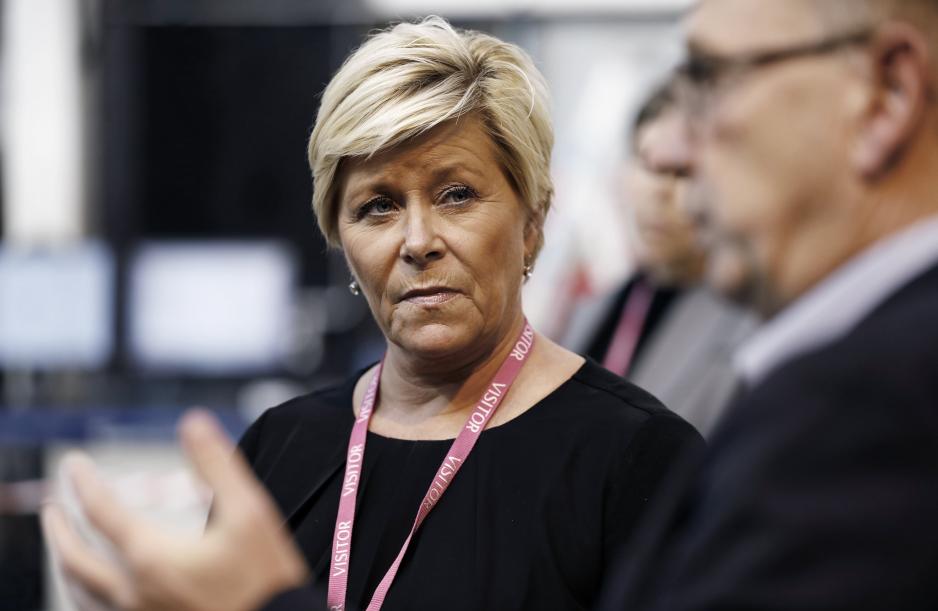Why Not Make Northern Norway A Tax Haven?

Norwegian Prime Minister Erna Solberg at the Our Ocean conference last October. We will live off the ocean in the future, she says. But can she make people live in the High North in order for the country to do just that? Photo: Werner Juvik/Statsministerens kontor
The government has control of the effect of targeted tax policies aimed at those who have the most and earn the most. That is how it hopes to boost the Norwegian economy. That means it should also be possible to use the tax regime to boost Northern Norway. It is a necessity for the rest of the nation, both from an economic as well as a security policy perspective.
Just the other day, Prime Minister Erna Solberg was on the podium during the Agenda Norway conference, this time in Narvik. She gave a speech that one should truly listen to – for a number of reasons. Just listen:
- But then it is important to recognize that an efficient initiative in Oslo may not be the same in Balsfjord [rural Arctic district].
A new recognition
No, it is not. What works in the capital may not work at all, neither in Balsfjord nor in one of the Arctic Norwegian cities.
People in the High North have come to that recognition a long time ago. The fact that the prime minister, and through that possibly also Finance Minister Siv Jensen, has drawn that conclusion is thus nothing but a good thing.
But then it is important to recognize that an efficient initiative in Oslo may not be the same in Balsfjord.
It is most important for a region that supplies major export income to Norway as a nation, that borders on Russia – a country all western military force train to be able to meet in a potential conflict – and one that supplies food to Europe as well as major parts of Asia and the USA.
The backdrop for PM Erna Solberg’s analysis, combined with rather bleak forecasts from statisticians who have in recent years praised the growth of the North Norwegian economy, is a different recognition altogether:
The sky above
The sky above us looked rather blue only few years ago. Today it appears grey.
Or in the words of the rather recently appointed Petter Høiseth of SpareBank1 Nord-Norge in his trend analysis, presented to PM Erna Solberg at the very same event:
- The clouds appear to accumulate over the North Norwegian economy over the next couple of years.
Petter Høiseth has taken over as regional financial meteorologist after the slightly elevated, overly optimistic Jan-Frode Janson, who year in and year out tried to convince his audience that the local economic forecast put all other such forecasts to shame.
But that was before.
It was before Donald Trump made conspiracy theories part of the foundation for international trade, or in the words of Daniel Bjarmann-Simonsen, Regional Director of NHO, the Norwegian Federation of Enterprises’ in Northern Norway, during a speech the other day:
- Donald Trump hurts both jobs and wealth creation in other countries.
It was before NHO, SpareBank1 Nord-Norge and many others understood that wealth accumulated on the tax returns of property moguls does not represent the kind of value creation that changes the demographic development in the High North. It basically just changed the bank accounts of a select few.
And yes, we do grow older
It was before the economists learned to combine corporate bottom line knowledge with Statistics Norway’s mathematically correct predictions about the population development in the High North.
- And we know that the population grows older, PM Erna Solberg continued.
- We have talked about it for a long time. But now we are actually there, she added.
Yes, some of us have talked about it for a long time, but as long as these conversations have not made any impression on the Ministry of Finance, which is allegedly in charge of taking initiatives regarding the population development in Norway, the only effect of these statistics has been for it to confirm itself while sending the North Norwegian population all the closer towards the retirement age.
We have talked about it for a long time. But now we are actually there.
There are also bright spots, even though growth in the High North relatively speaking will be lower than that of the rest of the countries for the next couple of years. Contrary to prognoses that were valid until a year ago. Companies plan new investments. Tourism, even the increasingly unwanted cruise tourism, is booming – as are the fisheries.
But if the population development does not change, this will soon be yesterday’s optimism. Neither birth rates nor immigration contribute here. The hope is, according to the Prime Minister and Høiseth, to make what is referred to as “the rest of the work force”, i.e. those who are currently unemployed, work.
A secret hope
This is a secret and national hope, however, one that does not carry sufficient clout to solve the challenges in Troms and Nordland, counties that for all practical purposes have an unemployment rate of next to zero.
That is when the government, in relation to the long announced upcoming Arctic whitepaper, can sit down and consider new tax solutions that are sure to hit their target.
Reduced income taxation and wealth taxation for those with high incomes and large fortunes has been the national recipe to boost the economy.
But since Northern Norway is not at the top of the income lists, rather on the contrary, and since it is not home to any major private fortunes save for property and fish farming, this is the kind of measure that works better in Oslo than in Balsfjord, to quote the prime minister.
Salary gaps
If you want to boost the Norwegian High North economy and secure a geopolitically and economically important population, you have to dare explore targeted tax reductions on income in the Arctic. That could balance out the salary gaps between the North and the South, and if you use it the right way, it will also secure population growth.

Norwegian Finance Minister Siv Jensen. Photo: Kenneth Hætta/Ministry of Finance
There is already a tax-based zone of initiative in Finnmark and some municipalities in northern Troms county.
The power centers in the High North, the densely populated areas, are outside this zone.
And the solution would be completely in line with the rest of the government’s tax regime tool box as a tool to reach the ambitions about economic growth outside Oslo too.
And according to the Finance Ministry, tax reliefs lead to increased income for the state as well as a robust population.

